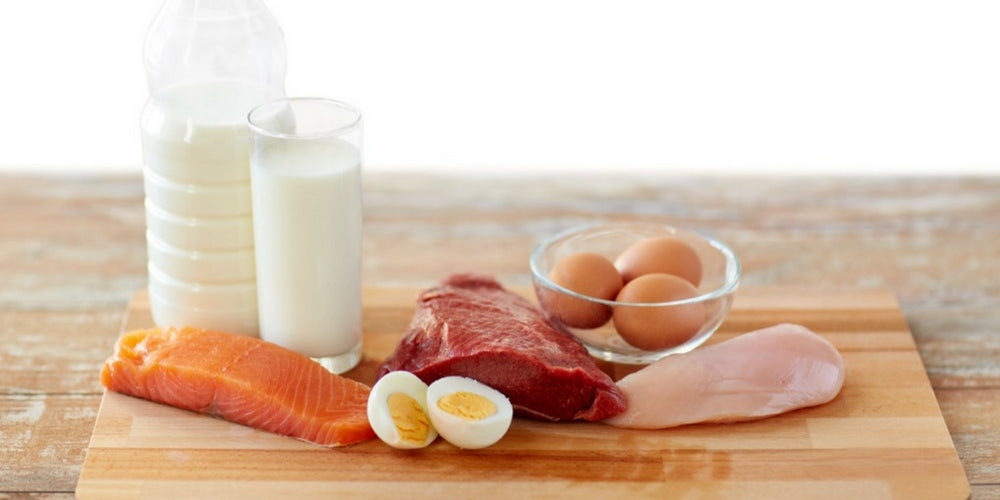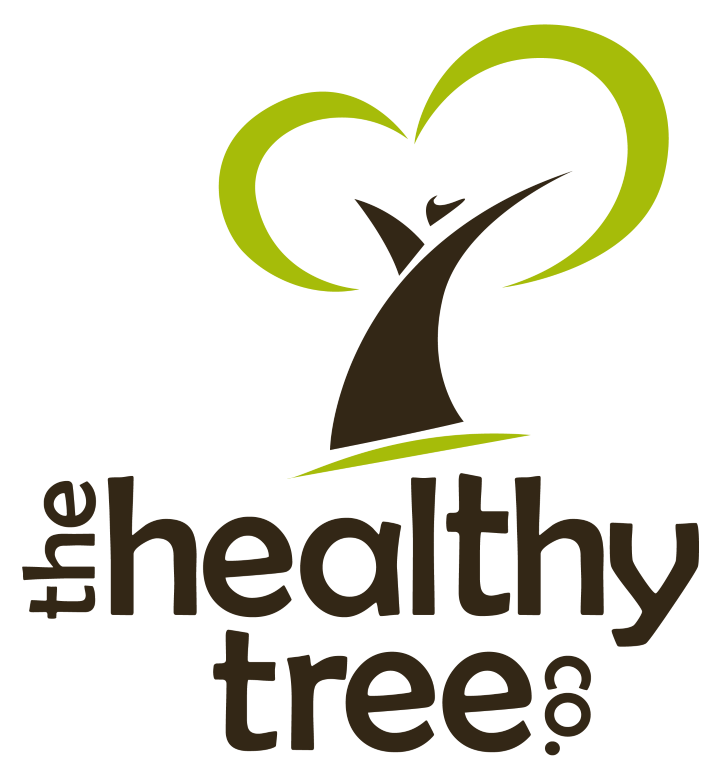Protein Exposed

Protein is an integral nutrient for our overall health and is one of three raw materials that the human body can use to make energy, alongside fat and carbohydrates. Protein-rich meals are known to help you stay full for longer and play an important role in weight management. Among the many benefits that sufficient protein intake has on the body, the most generally recognised is the part that it plays in our muscle recovery, maintenance, and growth – or, in helping us achieve a more functional, attractive and aesthetic body. To achieve these goals, many have made the switch to a high protein diet and look to include additional supplements in their pre- and post-workout routine. When faced with this decision it can be quite overwhelming to pick the product which is most suitable for you, particularly when there are thousands of supplement brands saturating the market, as well as the grand debate of animal protein vs. plant proteins. To clear the air, we are going to break down some of the facts surrounding the different forms of protein, comparing the effects they have on our bodies in terms of performance, digestibility and convenience.

What is Protein?
Protein is made up of smaller molecules known as amino acids. The body needs 21 amino acids to stay alive, and nine of them must come from food. These nine are known as “essential amino acids", or EAAs, and include Phenylalanine, Valine, Threonine, Tryptophan, Methionine, Leucine, Isoleucine, Lysine and Histidine. The remaining twelve can be produced by the body from other molecules. If a source of protein has all nine EAAs, it is called a “complete” protein and is understandably the most sought-after for performance. Leucine, in particular, is closely related to building muscle. If increasing muscle size and strength is one of your goals, you should look to include both whole foods and supplements with a high Leucine profile.
To determine the efficiency of a protein source used for building parts of the body, other factors must also be considered. For example, the amount of branched chain amino acids (BCAAs) present, whether the protein source is packaged or mixed with other components that may inhibit its digestion, the lack of enzymes necessary for the breakdown of that particular protein, and allergies/digestive problems that could cause the body discomfort. Essentially, the easier it is for your body to digest, absorb, and process a protein, the better it’s going to be for increasing muscle mass. The best measure of this is to look at the Biological Value (BV) of each protein source, i.e. the proportion of absorbed protein from a food which becomes incorporated into the proteins of our body, not just the amount of protein in the food. The old saying of “we are what we eat”, is a little bit outdated. We might say instead, “we are what are bodies can digest and use” – not quite as catchy but probably more accurate. Therefore, our Biological Value is calculated by measuring the ratio of nitrogen incorporated into the body over nitrogen absorbed. More simply, it is a measure of the proteins’ "usability" factor.

Animal Proteins
The first thing most of us think of when we hear the word protein is MEAT. When you look at pictures of the diets of bodybuilders and athletes, you will most likely see meat as the focus of each meal. But is meat really the best source of healthy protein?
Animal protein such as eggs, meat, chicken and poultry, as well as seafood and dairy products, contain all the essential amino acids you need to build proteins within your body. They are also some of the easier protein sources for the body to digest and break down into amino acids.
A 100 g serving of red meat, when cooked, can provide up to 28g of protein. Although red meat is an excellent source of dietary protein, the downside is that it tends to be higher in saturated fat and cannot be eaten in isolation from other calories. For example, a 100g serving of steak can contain up to 10g in saturated fat and, due to this, only contains about 20% usable protein (BV). Instead, look to a diet consisting of lean protein and grass-fed meat, and avoid buying processed meat that has been preserved by curing, salting, smoking, drying or canning. Examples of this are sausages, salami, bacon, ham, corned beef, smoked meat, beef jerky and canned meat.
Diets that rely heavily on animal protein are typically at greater risk of developing cardiovascular disease, so it is important to balance this with a diet that is rich in plant-based foods which will give your body the nutrients, vitamins, minerals and fibre it needs to fight disease and function optimally.
Probably the most useable animal proteins are those in eggs and milk. Leading the way in popularity is Whey Protein - see our Organic Whey Protein here. Whey protein typically comes in two major forms: Whey Protein concentrate (WPC) and Whey Protein isolate (WPI). Whey protein has a protein count of around 80g per 100g serving and has an extremely high biological value, with WPC ranging from 90-100%, and WPI ranging from 100-150%. Whey protein is low in Lactose content and is quickly absorbed by the human body. It is also high in branch chain amino acids and contains bioactive ingredients such as antioxidants and immunoglobulins that offer protective benefits for cardiovascular conditions, high blood pressure and diabetes. It is most commonly used as a pre- and post-workout supplement due to the speed at which it can be used by the body. It also aids in increased muscle strength, reduced feelings of hunger and building fat-free mass.

Plant Proteins
A common misconception about plant-based diets is that they lack protein. This simply isn’t true! There are many plant proteins that are, in fact, higher in protein percentage than meat. Some examples of these are black beans, butter beans, quinoa, buckwheat, soy beans, tempeh, hummus hemp seeds, and pumpkin seeds. The only drawback is that not all plant proteins are rich in all EAAs, making them perceived to be less effective for muscle gain. Plant proteins that are considered complete also generally have lower BCAA levels compared to dairy. You can still obtain all the essential amino acids with plant proteins but you will need to eat a variety of combinations of plant proteins as well as a higher quantity to obtain an equivalent value to animal protein. Together, legumes and whole grains provide all the essential amino acids you require for a healthy diet. The following plant proteins are recommended for muscle growth:
Spirulina and Chlorella contain the highest protein percentage of all protein (both animal and plant). In a 100g serving, spirulina powder contains 66g of protein and has a biological value at around 75-80%. Both spirulina and chlorella are a fantastic source of iron, trace minerals and B-vitamins.
Pea protein is the closest plant protein to whey protein. It is rich in all essential amino acids except for methionine which is easy to make up with small amounts of animal protein such as chicken and eggs, or other plant proteins like rice protein or oats if you do not eat meat. It has a whopping 80g of protein per 100g serving but comes in with the slightly lower biological value of 65%. This means that not as much of the protein will be utilised by the body and you may have to take more to get the same benefits as you would from a smaller amount of whey protein. Not only that, pea protein is comprised of around 19% BCAAs, similar to whey protein with is comprised of around 20% BCAAs. This makes pea protein powder almost equally effective for muscle recovery.
Hemp protein is a complete food with all EAA’s and BCAAs. It has 49g of protein per 100g serving and a biological value of 80%. It is also high in omega-3, calcium, magnesium and natural amino acids. When compared to whey protein, its amino acid profile does fall a bit short on tryptophan, leucine and lysine. However, this protein source has many other benefits, such as containing high levels of delta-tocopherol, a powerful antioxidant, as well as a high level of fibre.
When using plant-based proteins, a multisource combination is preferable as it contains a balanced amino acid profile. A blend can often achieve a higher amino acid content overall. Unlike animal proteins, plant based foods are free of cholesterol and unhealthy saturated fat, making them a better choice when we consider the risks for developing heart disease and cancers.

Among its’ many other uses by the body, we know that protein helps to repair and build muscle. This is why it is so widely recommended after intensive exercise as the body looks to repair itself. A new study published in the American Journal of Clinical Nutrition found that people who consumed the least amount of protein overall also had the lowest measures of muscle mass and strength, but the type of protein people ate didn’t seem to matter. After the researchers adjusted for other factors, they found that differences in protein source had no impact on the musculoskeletal health of both men and women. From these findings we might conclude that as long as you consume a diet that is rich in EAA’s, whether it be from animal or plant protein, you can equally improve your overall muscle health. With so many different protein sources out there, together with the increasing awareness of plant-based/vegan diets and their availability therefore, we shouldn’t have to look far to find high-quality protein sources that also provide additional nourishment for our bodies.







